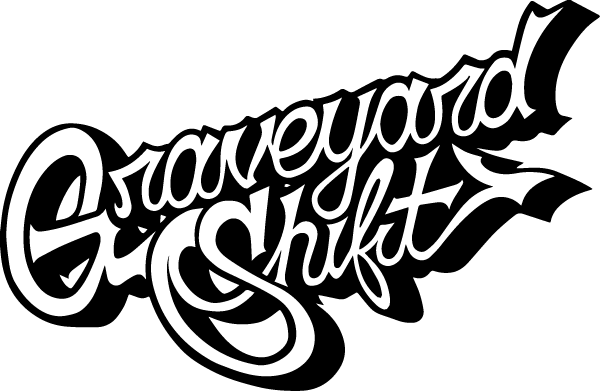
Senator Hoylman-Sigal Introduces Fashion Workers Act to Protect Labor Rights by Graveyard Shift
Share
# Senator Hoylman-Sigal Introduces Fashion Workers Act to Protect Labor Rights
On a warm August day in 2024, Senator Brad Hoylman-Sigal took major strides towards rectifying issues that have plagued the fashion industry for ages. The introduction of the **Fashion Workers Act** aims to protect labor rights, ensuring fair treatment for all workers involved in the fashion industry.
## Understanding The Relevance
The fashion industry, while glamorous on the surface, often hides a grim reality. Workers throughout the supply chain – from designers to laborers – face *verbal, emotional, and sometimes physical abuse*. The Fashion Workers Act aims to address these longstanding issues, promising a future where everyone in the industry is treated with the respect and dignity they deserve.
### The Core Objectives of the Fashion Workers Act
The bill, backed by Senator Hoylman-Sigal, targets several key areas:
1. **Fair Wages**: Guaranteeing that all workers, regardless of their position, receive fair compensation.
2. **Workplace Safety**: Ensuring that all fashion industry workplaces adhere to high safety standards.
3. **Worker's Rights Education**: Providing resources and education on labor rights to all workers.
### Why This Act Is Needed Now
The need for this act has never been more urgent. The global fashion market is worth billions, yet many workers still face gross underpayment and mistreatment. Here’s why the Fashion Workers Act is timely:
#### Increased Awareness
There has been a *surge in awareness* about workers’ rights, driven by social media campaigns and documentaries. Consumers are more informed and demand ethically produced goods.
#### Past Failures
Past attempts to address these issues have fallen short. The current legal frameworks either lack the *necessary enforcement mechanisms* or are riddled with loopholes.
## Key Provisions of the Fashion Workers Act
### Ensuring Fair Compensation
One of the bedrocks of the Fashion Workers Act is its emphasis on fair compensation. The act outlines stringent policies to ensure workers receive pay that truly reflects their contribution:
-
Minimum Wage Regulations: Implementing a universal minimum wage across all sectors within the industry.
-
Overtime Pay: Ensuring workers are paid overtime for any hours worked beyond the standard 40-hour workweek.
-
Payment Schedules: Mandating regular pay schedules to eliminate inconsistencies in compensation.
### Protection Against Exploitation
It's common for workers to be exploited under the pretense of internships or unpaid roles. The Fashion Workers Act aims to plug these gaps:
-
Paid Internships: Requiring all internships to be paid, compensating young talents fairly for their work.
-
Contract Clarity: Ensuring that all employment contracts are clear and transparent, detailing the job role, expectations, and compensation plan.
### Improving Workplace Safety
Safety in the workplace is non-negotiable. This act will enforce stricter regulations:
-
Health and Safety Protocols: Revamping health and safety guidelines to minimize workplace accidents and occupational diseases.
-
Safety Audits: Regular safety audits to ensure compliance with the new safety regulations.
### Enhancing Cultural Competence
Diversity and inclusivity are increasingly becoming central themes in modern workplaces. The Fashion Workers Act prioritizes these values:
-
Diversity Training: Regular training on cultural competence and anti-discrimination practices.
-
Inclusive Hiring Practices: Encouraging recruitment processes that foster diversity within the workforce.
## Impact on the Fashion Industry
The Fashion Workers Act, if passed, will have monumental implications for the industry. Here is what we can expect:
### Economic Implications
While the introduction of fair wages and safe workplace environments may result in increased operational costs, the long-term benefits will outweigh these initial expenditures. Companies investing in their workforce can expect *higher productivity levels*, less turnover, and an enhanced brand reputation.
### Social Implications
Workers will experience a significant boost in morale with better working conditions and fairer wages. As a domino effect, this will lead to a more positive work culture and increased job satisfaction.
### Consumer Behavior
Consumers are becoming increasingly conscious of the ethics behind the products they purchase. The Fashion Workers Act will likely encourage consumers to support brands that are committed to fair labor practices, thus driving a shift in consumer behavior towards more ethical consumption.
## Voices from The Industry
Various stakeholders in the fashion industry have lauded the introduction of the Fashion Workers Act. Here are a few voices from the sector:
### Designers
Renowned designer Jane Doe stated, “This act is a game-changer. As designers, we often see the harsh realities faced by our peers and colleagues. The Fashion Workers Act is a step towards a brighter, fairer future.”
### Laborers
John Smith, a factory worker, praised the act, saying, “For years, I’ve worked under conditions that were far from ideal. This act gives me hope that things will change, and I’ll finally receive the respect and compensation I deserve.”
### Consumers
Consumer advocate Mary Johnson noted, “I’ve always been particular about the products I buy. Knowing that this act could ensure the clothing I purchase is made under ethical conditions is reassuring.”
## Final Thoughts
Senator Hoylman-Sigal’s introduction of the Fashion Workers Act marks a transformative moment in the fashion industry. By addressing fair wages, safety, anti-exploitation, and cultural competence, the act aims to rectify the deep-rooted issues that have plagued the industry for years.
The move not only reflects growing consumer demands for ethical production but ensures that the people who keep the industry moving receive the recognition and respect they rightfully deserve. As we await the legislative journey of the Fashion Workers Act, it's clear that the face of fashion is on the brink of a revolutionary change.
